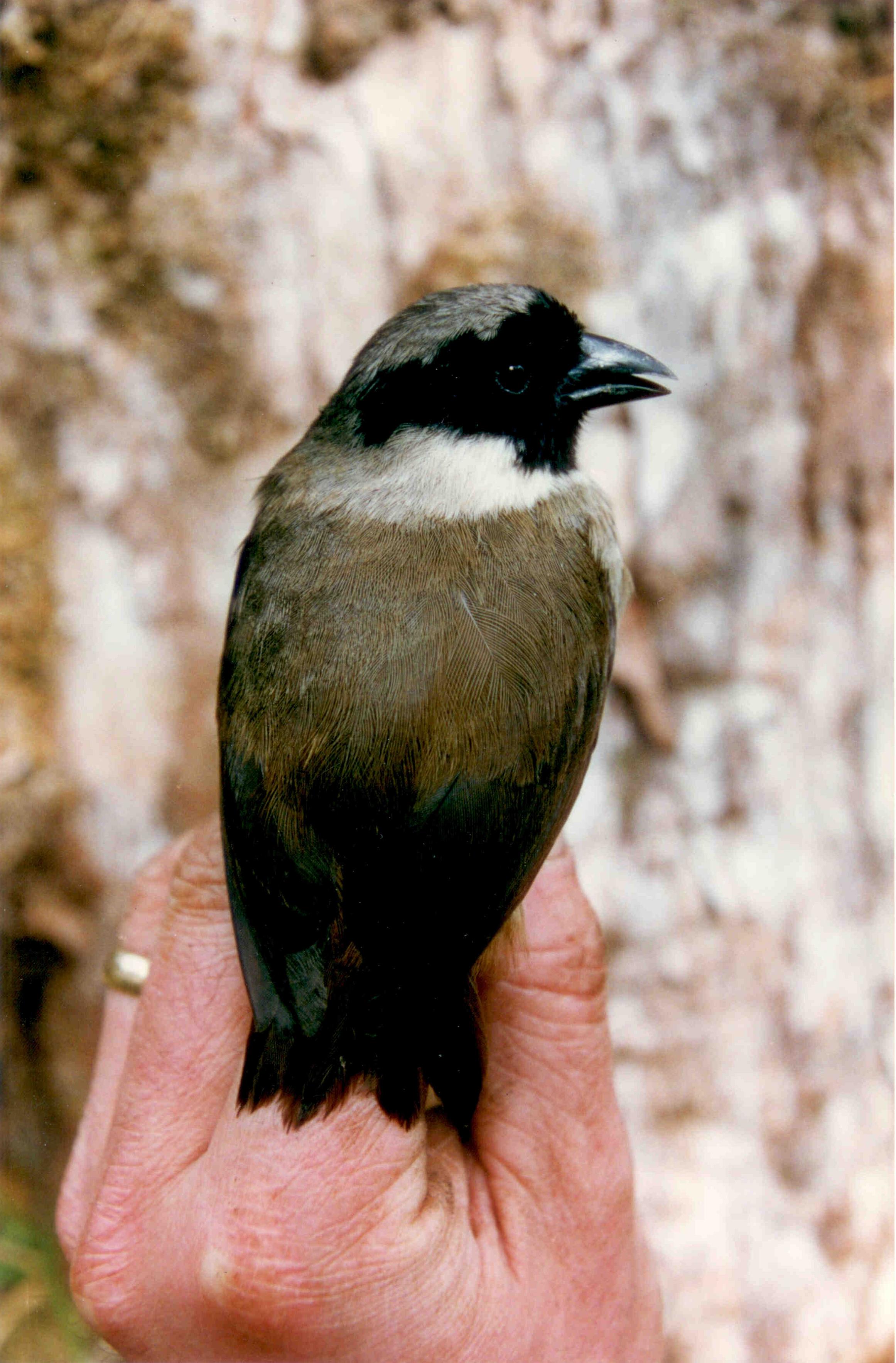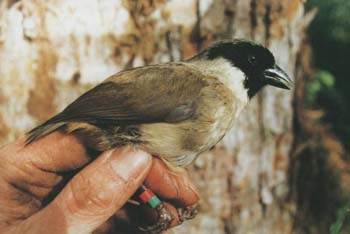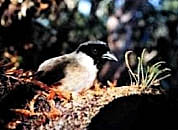
Melamprosops phaeosoma
TAXONOMY
Melamprosops phaeosoma Casey Jacobi 1974.
OTHER COMMON NAMES
English: Black-faced honeycreeper; French: Po-o-uli masquй;
German: Mauigimpel; Spanish: Puli.
PHYSICAL CHARACTERISTICS
5.5 in (15 cm); 0.9 oz (25.5 g). Differs from all other honeycreeper
species in odor, tongue structure, and vocalizations,
and its color pattern is unique among all Hawaiian native
birds. In 1992 some ornithologists proposed excluding the
po’o-uli from the Drepanididae, but this was not carried, and
as of 2002, the species was included. Main color brown, male’s
crown is gray merging into dark brown on nape, belly is buff
washed with brown. Most striking and memorable feature is
black mask offset by white throat. Has short, black, finchlike
bill and long, pale legs. Female is similarly colored, but more
cryptically.
DISTRIBUTION
Northeastern slope of Haleakala Crater on Maui.
HABITAT
Lives just below timberline in rainy (up to 550 in [14 m] a
year), high-altitude, nearly impassable ohia forest draped in
epiphytic mosses, lichens, and ferns.
BEHAVIOR
Spend most of their time foraging in dense forests in small
family groups. Seldom vocalize, main calls are single or repetitive
“chit.”
FEEDING ECOLOGY AND DIET
Hop along tree limbs, tearing apart epiphytes and loose bark
with finchlike bills and gleaning leaves and bark in the subcanopy
and understory, searching for beetles, spiders, and
other invertebrates, especially land snails. Only honeycreeper
to prefer land snails as major dietary item.
REPRODUCTIVE BIOLOGY
Breeds February to June; lays one or two eggs in a cup nest.
CONSERVATION STATUS
Critically Endangered. As of 2001, only three individuals (two
females and one male), are known. Invasive rats probably main
agents of this near extinction.
SIGNIFICANCE TO HUMANS
A rallying symbol for conservation.
Photo Gallery of - Po’o-uli




 Animalia Life
Animalia Life